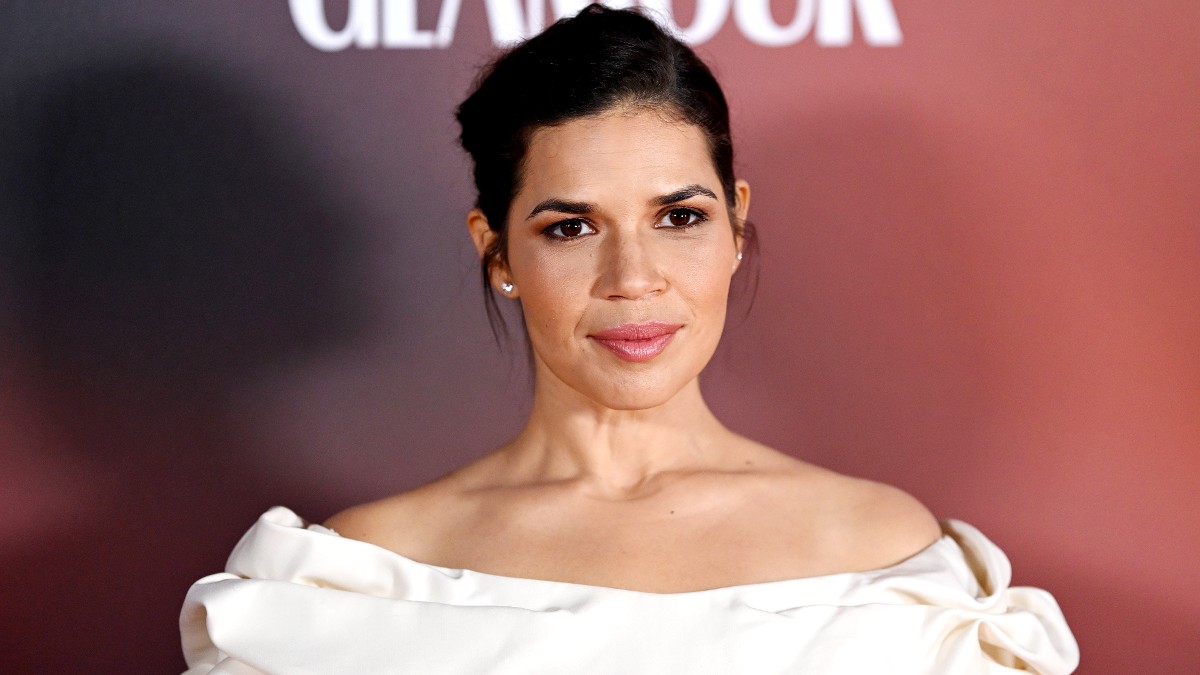America Ferrera Is Right: Including Average-Size Women in Film Isn’t ‘Groundbreaking’

America Ferrera is speaking out against Hollywood acting as if casting her, an average-size woman, in films was “groundbreaking.” She is absolutely correct that acknowledging average women exist is far from what actual body diversity and acceptance should look like.
It’s no secret that the film industry, alongside the fashion industry, has long been detrimental to body image. These industries constantly promote unrealistic and unhealthy beauty standards and reinforce distorted body image by framing thinness as the epitome of beauty. The lack of average or plus-size women in both industries gives women and men the false notion that the average woman is petite.
When one only sees women with small physiques onscreen, it’s easy to think that this is how everyone looks. However, the reality is that average-size women are simply not shown onscreen. The screen also doesn’t show the extreme temporary diets and fitness routines that the actors often undergo before performing, which are not sustainable long-term or for regular working individuals whose jobs don’t include hours of training and guidance from elite personal trainers and dieticians.
Now, Ferrera is providing insight into what the industry looks like from an actor’s perspective. While she is most well-known today for her show-stopping monologue in Barbie, she was originally known for her roles in Ugly Betty, The Sisterhood of the Traveling Pants, and Real Women Have Curves. Ferrera was just an average young woman starring in these films, but the industry thought it was “groundbreaking” that she was included. Even though this was years ago, things have changed very little.
America Ferrera says she was “Hollywood’s version of imperfect”
In an interview with Elle, Ferrera describes how bizarre it was for Hollywood to act as if her casting in her earlier films was a huge milestone for body positivity. Anyone who goes back and watches these films will see that she is an average-size woman. She called it “insane” that her casting was being labeled as “groundbreaking” and that she was being praised as setting a new standard of beauty merely because she wasn’t underweight. Ferrera stated, “I was Hollywood’s version of imperfect, which seems ridiculous. I don’t feel alone in that, either. There are so many women who were called brave, just because they are people in bodies.”
Ferrera is correct that casting one average-size woman in a few films in the early 2000s should not have been something for Hollywood to brag about. It’s quite horrifying how misguided the industry is that it thinks just casting average women is the epitome of body positivity, acceptance, and representation. These are women who should have been cast and celebrated all along. What’s especially concerning, though, is how the industry tried to label her as “curvy,” a term that is pretty similar to today’s common label of “plus-size.” There’s nothing wrong with being curvy or plus-size, but Hollywood was trying to label Ferrera this when she wasn’t.
So, while Hollywood was being praised for casting someone “curvy,” it was only further distorting body image. By claiming that women with average body weights are plus-size, it then makes viewers think that being underweight is what’s average and further increases the misunderstanding towards those who are genuinely plus-size. Because the average actor in Hollywood has a more petite physique, casting average-size women alongside them further creates the illusion that they’re plus-size, even though they may be smaller than the average plus-size woman in real life.
Unfortunately, this is still happening today. There are so many films I’ve watched—The DUFF, Sierra Burgess Is a Loser, and I Feel Pretty, to name a few—where the main protagonist, who is supposed to be plus-size, just looks like an average woman. Of course, that’s only half the problem when all of these films also always try to make it seem like the “plus-size” woman is unpopular, ugly, and the butt of every joke.
This phenomenon isn’t limited to the film industry. You’ll likely notice how many clothing companies, like Victoria’s Secret, have popularized the term plus-size and always make a huge deal over their first plus-size models. However, the problem is that plus-size isn’t plus-size. In the United States, plus-size usually refers to sizes 14 and over. Meanwhile, the average size of American women is size 16. So, when companies are touting their plus-size models, they really just mean average women. Like the film industry, these companies want to pretend that they’re so progressive for acknowledging that average women exist while usually not even offering inclusive sizing. It wasn’t until last year that Victoria’s Secret started offering sizes over XL.
From fashion to Hollywood, this country needs to focus on being actually inclusive and accepting instead of patting itself on the back for allowing an average-size woman to be included.
(featured image: Gareth Cattermole/Getty)
Have a tip we should know? tips@themarysue.com